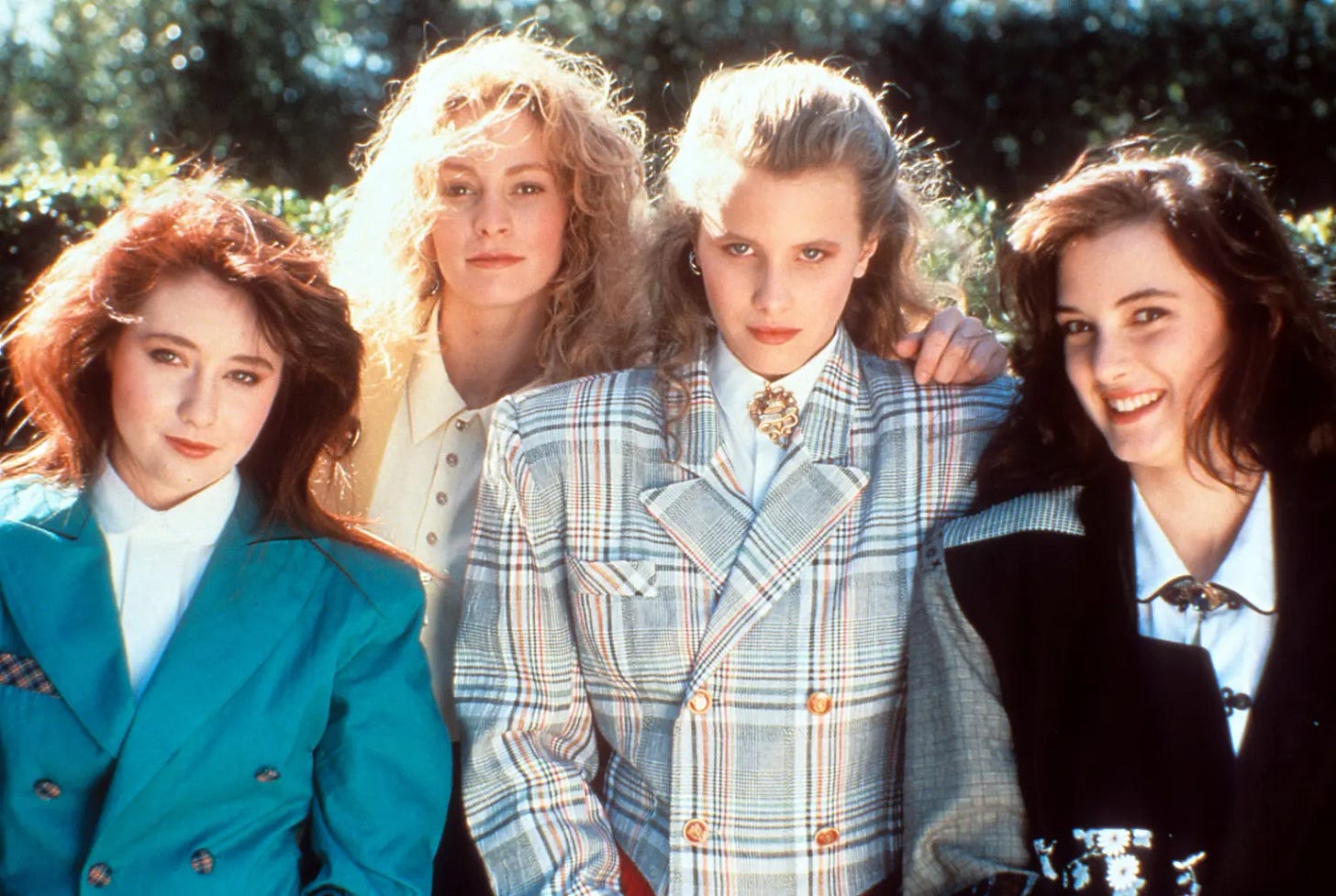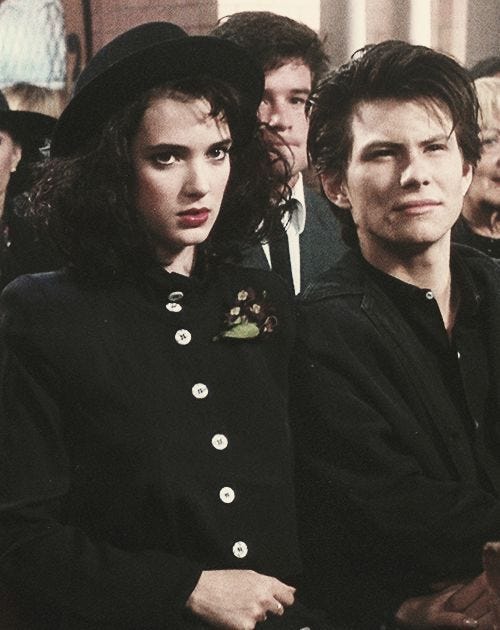A Few Intemperate Thoughts Regarding The Cult of Dumb and The War on Spirit from Woke to Based
Still her old empire to restore she tries,/ For, born a goddess,/ Dulness never dies.
One great thread that connects 2010s online “social justice” or “woke” leftism and the anti-woke reaction that now dominates US state and culture is anti-intellectualism. I write this with the caveat that Trumpist reaction is the much more substantive threat while anti-wokeism is exhausted: the new status quo masquerading as transgression.
Anti-intellectualism is the historic patrimony of the American right: from the Illuminati panics of the 1790s through the nativism of the nineteenth century and the various red scares of the twentieth, the figure of the intellectual—and intellectualism—occupies a central role in US right wing demonology: foreign, somehow both effete yet still dangerous or subversive.
This is very unlike the European right and its paradoxical traditions of sophisticated reactionary thought—paradoxical because so much of this thought was anti-rational in character—exemplified by de Maistre, Nietzsche, Spengler, and Schmitt among others. One (superficially?) compelling element of the new US alt-right is its attempts to build on this more cerebral version of European reaction. But has anti-intellectual Tony Soprano-ism ever reached greater apotheosis than in Roy Cohn’s apostle turned cartoon Duce? And despite their risible pretensions to serious thinking, Thiel, Musk, and the transhumanist oligarch gang perfectly blend tech hucksterism and tent revivalism.
But what about the left-anti-intellectualism of the last decade? We have the turn against free speech, or the embrace of call out and cancellation among other quasi-authoritarian tactics, which we can trace back to Herbert Marcuse’s attack on repressive tolerance, the degenerate Maoism found amongst certain segments of the new left, and the anti-sex Puritanism of second wave feminism at its worst (Dworkin, MacKinnon, e.g.). But this is now well trod ground.
I am more interested in idiocies like poptimism, whereby the consumption of pop confections such as Taylor Swift or Charlie XCX was reconceptualized as radical and virtuous act; conversely aesthetic complexity, intellectualism, and experimentation of any sort were coded as retrograde and “male.” Admiring the output of David Foster Wallace is misogynist! Funny how nobody sees the sexism in this move ( aesthetic complexity is inherently male—but aren’t we now all obliged to believe that there is nothing inherent about sex/gender?—while bubblegum schlock is pure femininity, but, like, empowered!).
A lot of this has its roots in the “populist” cultural studies dogshit that came to dominate the academic humanities in US higher ed during the nineties, as it permeated the pedagogy of those rhet-comp classes every undergrad is made to take. Here was a pernicious embrace of consumer capitalist pop culture repackaged as subversion with a few dashes of Stuart Hall plus some choice bits of “anti-elitism” (often proffered against a caricature of mandarin Frankfurt School critical theorist Theodor Adorno). Tom Frank’s Baffler got it right the first time around: these cult studs provided an academic veneer for good old American anti-intellectualism, laying the groundwork for the last few decades of our collective cultural abortion!
By the 2010s the same extremely online downwardly mobile contingent who pushed themselves as the vanguard of the post-Occupy left also reconfigured cultural criticism along the lines of cult stud populism, with its distinctive mix of jargon- heavy pseudo-intellectualism and unreconstructed anti-intellectualism. But suddenly supercharged by social media’s memetic holograph.
The execrable figure of the fan—often defending multimillion dollar franchise schlock from Marvel to Barbie against a wholly phantasmal high culture establishment—was ubiquitous. As the exercise of aesthetic judgment was anathematized as “violence,” anti-racist “praxis” demanded that we dutifully genuflect before Beyoncé’s latest. Or else.
Meanwhile pop millennial feminism mutated into some idiot mixture of girl bossing, self-care, and various half knowing and wholly incoherent reconstitutions of retrograde femininity, or exactly the sort of thing that second wave feminists sought to abolish. And then came the post-pandemic anti-woke cultural backlash. Ubiquitous squawks about the great”vibe shift” aside: while the US right benefited from a more general sense of cultural frustration, of which knowing anti-wokery was one part, has our intellectually vacant cultural landscape changed so much?
The opposition between woke and anti-woke culture is an overblown one in the end. For example: NYC downtown culture (“Dimes Square” or what’s left of it)—which supposedly represents a pandemic-era Zoomer rejection of millennial moralism—is more mutation than negation. Despite a lot of blather about offline living, trad lives, and resurgent Catholicism, “ironic” sexual self-objectification is the dominant DS scene girl flavor of canned transgression—an irreverent variation on the often humorless, and always unsexy, millennial “sex positivity” fixation. And intellectualism is certainly nowhere to be found in these bad faith bohemia simulations.
I keep returning to an image from the first season of Mike White’s White Lotus, which I used to illustrate the pathologies of the 2010s left: Sidney Sweeney’s Olivia and Brittany O’Grady’s Paula. The paper of record notably dubbed this duo “the scariest girls on tv” at the time. These two over-privileged mean girls deftly use social justice rhetoric to bully and humiliate—ruining the life of a young Hawaiian native employee of the show’s titular hotel in the process. Many read White’s satirical depiction as a based exposé of woke identitarianism for the upper class (and, in this case, hot girl) social sadism that it is.
But these mean girls are just as apt mascots for the latest crop of anti-woke poseurs: cruelty and clout chasing are the point for our Heathers, and their aspirant edgelord fuckboy suitors, while the ideological conflicts—woke and its antithesis—that preoccupy so many purveyors of educated online discourse are at best crude and easily exchangeable rhetorical bludgeons mined from the memes of the day. In other words: not much reading or thinking to be found here, although they sure look good with those big, thick books in hand.
There is also a more substantive, if inchoate, literary culture, recently described (or misdescribed) as neo-romanticism —as we can see here on this platform and out there in the concrete world—emerging from the ruins of both the mainstream literary establishment and the academic humanities. I am thinking of writers like Kumin, Barkan, and Gasda, or their work, among others. (Gasda is notable in this regard since he is associated with the Dimes Square scene that he mercilessly satirizes for its anti-intellectual fuck boy/scene girl flavor of nihilism; a case of immanent critique growing into a genuine, geographically distinct, intellectually serious neo-romantic subculture across the East River—but more on this in a longer post to come.) But all of these figures are (relatively) older and I am more concerned here with the fate of intellect and imagination among younger people for a few reasons.
Youth movements have been in the forefront of the great cultural shifts from the historical romantics onwards: is there a new countercultural youth movement on the horizon or has that pattern gone obsolete with the digital absorption of lifeworld and dreamworld? This last question is of particular concern to a cohort who are in many ways the victims of a great socio-technical experiment whose Frankenstein’s sought to mine and expropriate an entire generation’s thoughts, feelings, and interpersonal capacities for various digital subscription services (and by way of sundry pharmaceutical prostheses). Mass refusal—for the sake of thinking but also feeling and making—beyond the empty woke/anti-woke two step is a necessary first step in reclaiming an enlightened and convivial future.
Apropos of nothing, with images of blissful stupidity from Being There and Forrest Gump in mind, I attempted to feign dumb or at least normie for a few weeks when I was 20 or so. It didn’t stick because it made me more miserable than the misery I was supposedly avoiding alongside thought. My character was pretty much set by that age despite all the recent pseudo-scientific jabber about brain plasticity up into your 30s: the great recent wave of arrested development is, I think, better explained by a historically specific digital retardation post-2010. The Great Algorithmic Concussion.
I mention this because I know more than a few people—intelligent, imaginative, critical in their dispositions and all in educated, left-leaning or at least literary milieus—who’ve deliberately adopted a kind of shallow and dumb demeanor because easier and happier: fun! Yet they don’t seem happy. Unlike my stab at performative self-lobotomy, we can all see, in the Trump ascendancy, that stupidity is more likely to produce misery and sadism than the tranquility of the holy fool, and yet…see also resentment.
I teach English to 18-21 years olds and—as you’ve probably heard—during the last few years, I’ve witnessed something like the final stages of an extinction event in the classroom as LLMs finish a process initiated by smartphones and social media. Think the evacuation and automation (i.e. cancellation) of the reading, writing, thinking, and attentional capacities that define human intelligence and imagination. (Or I should say that imagination—which links reason, feeling, and those leaps of novelty that often resemble the logic of the dream rather than computation—is exactly what marks human intelligence as unique.)
Intelligence and imagination persist among some students of course—let’s call them the smart ones—even as too many of these same students now deliberately downplay or even deny their capacities. In a holographic world defined by various pea-brained, ass shaking influencers hawking their variegated flavors of human capital, intelligence, like deep feeling, is cringe.
Imagine the young B. Pascal wishing away his math thing, the young J. Keats wishing away his poetry thing, the young E. Brontë wishing away her novel thing, or the young W. A. Mozart striving to just put that music bug aside and become more like the hot hostler whose horseplay is trending, become more like that comely barmaid with an IG account about to launch her up-up-and-away into the Empyrean heights of holy influencer-hood: no more TB or melancholy or weeping intermittently throughout the day. We could be happy!
So you hide your fire. Then, a few years later, realize that you buried the best thing about you even though you named it after your ex—the one you hate and love in half-measures—but you’re still miserable because you murdered what made you incandescent: intelligence and imagination and the capacity to see through and beyond The They and its darkness visible. It is your vocation and your burden: what will bring you joy in the end.
Joy and that burden come together, in knots, you realize, which is why it’s so easy to equate the pain-killing stupor of complacency with happiness. Consider the daemon in that Socratic-Coleridgean way. Embrace your daemon, bro.
A culture that rejects intelligence in this most substantive sense is a culture that deserves to die.






"...so many purveyors of educated online discourse are at best crude and easily exchangeable rhetorical bludgeons mined from the memes of the day..."
That nicely encapsulates why I haven't been much impressed with the "revitalization" of cultural/political critique that has supposedly accompanied the migration to Substack from those other mediums where the very online SJW moralists prowl. (Not to speak of the AI enshittification of those other mediums, another story.) By in large, despite Substack's rep I've found that way too much of the discourse on the thing—perhaps more so in comments threads than in posts—traffics in paper-thin woke/anti-woke tropes that are both dated and incestuously self-referential.
continued excellence